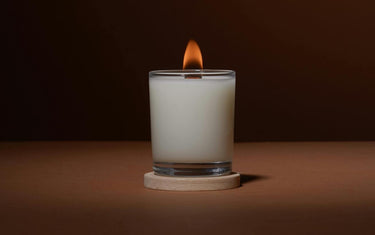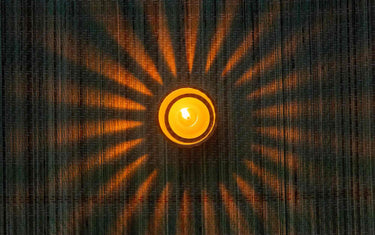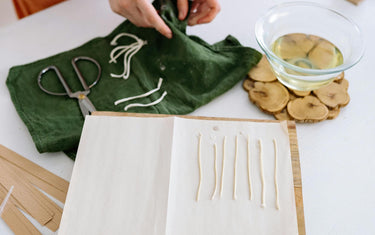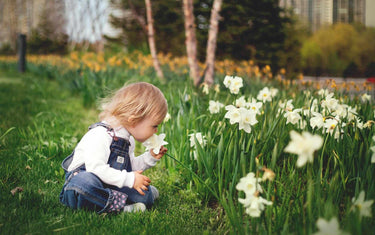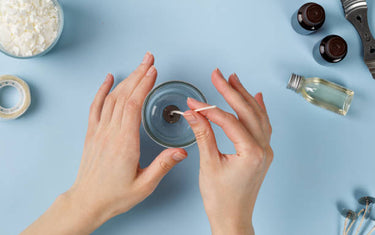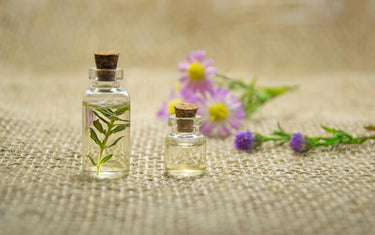7 min read / 25 July 2022 / Laura Garvin Gomez
How To Use An Essential Oil Diffuser
We've heard all about their gentle mists and powerful abilities to diffuse scents - but how do you actually use one?
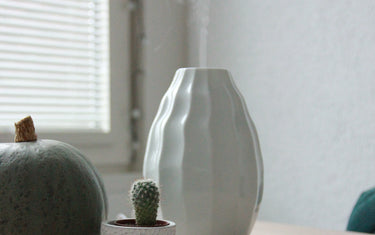
Diffusers seem to be everywhere these days, and realistically, it's no surprise.
These little devices are powerful in their abilities to spread beautiful scents into the air, and can be utilised time and again for a number of different fragrance combinations. But, how do you actually use one?
There are many different types of oil diffusers out there - from traditional oil burners and no-fuss reed diffusers to complicated, expensive high-tech instruments.
In spite of this seemly endless wave of variety, the most common form of diffuser you'll find on the market is the electric steam diffuser.
Electric steam diffusers work by dispersing gentle streams of vapour into the air at gradual intervals. Each stream carries tiny little particles of water and oil through the air, transporting the oil's aroma around the room in a soft but effective way.
What are the benefits of using an essential oil diffuser?One of the best methods for experiencing the many benefits of essential oils is through the process of therapeutic inhalation. Inhaling essential oils can produce a number of positive effects for the mind and body, including, but not limited to:
Using an electric diffuser is a quick and easy way to experience all of these therapeutic benefits at once, while also simultaneously giving the surrounding area a pleasant, grounding scent as well as cleansing the quality of the air. Diffusers are also a great natural alternative to shop-bought air fresheners, which can sometimes contain unwanted, unnatural chemicals.
|

How to use an essential oil diffuser
Generally we recommend adding 5-10 drops of essential oil to your diffuser if using one oil, and 2-3 drops of each oil if making a blend. Drop counts can vary depending on personal preference and also the size of the space where the diffuser is placed.
Here are some basic steps to get going with your electric diffuser:
- Pick your favourite essential oil or fragrance oil.
- Add water to the fill line of the diffuser basin.
- Add in 5-10 drops depending on how strong you want the aroma to be.
- Turn on your diffuser and enjoy!
How does an electric diffuser work?
All electric diffusers contain slight differences depending on the make, model, and style. In general, however, most tend to work in a pretty simple and equal way.
Here are some more tips for getting started with your new electric steam diffuser:
- Set it up: As they are electric appliances, essential oil diffusers will need to be plugged into a wall or power source in order to function properly. Some diffusers may also use batteries. Be sure to place your diffuser away from any delicate furnishings, or on top of a tray or mat, as the moisture emitted from the diffuser may cause damage to softer or more precious materials. It is also important to ensure the space is well-ventilated before use, so the aroma doesn't build up and become potentially overwhelming.
- Fill up the diffuser: Add tap water or distilled water to your diffuser bowl up to the fill line. Remember not to let the water run too low, as your diffuser relies on it to work properly. Some diffusers may come with their own measuring container to avoid getting water near the electrical outlets - be sure to use this if it applies.
- Add your favourite oils: Select your desired essential oil, fragrance oil, or blend from your collection and sprinkle in. If you're wondering how many drops of essential oil you need in a diffuser, the number may vary slightly depending on the manufacturing instructions and the size of your diffuser. As a general rule of thumb though, we recommend adding 5-10 drops of oil per use.
- Adjust the settings: Place the lid on the diffuser and choose your desired settings. These can vary depending on the type of diffuser you choose. Some diffusers feature soft lighting in different, inter-changing colours. Utilising these settings can contribute towards successful chromotherapy or "light therapy", which has been said to help stimulate certain parts of the brain as a way to potentially cure diseases and bolster health.
Combining this known method with aromatherapy can further support feelings of wellness and security in your environment.
Most diffusers also come with a timer, so you can control how long you would like the scent to travel for.
In general, diffusers should only run for about 15-20 minutes to avoid overpowering the space, however some models may have more varied options, so it's important to check your diffuser manual before use.
Finally, switch on and enjoy!
What oil do you put in a diffuser?
There are several types of oils that can be used in diffusers, and the most common of these tends to be essential oil.
This is due to the rich number of properties that can be unlocked when diffusing essential oils around the home.
What are the best essential oils to diffuse?
While any essential oil can create a fantastic environment for wellness, some oils are preferred above others due to their increased set of benefits as well as their distinctly pleasant scents.
Some of the most popular essential oils for diffusers include:
Though essential oils are the more popular choices for diffusers because of their added therapeutic properties, they aren't the only option for diffusion.
Fragrance oils, which can also be used to scent candles and soaps, can be used in diffusers to produce long-lasting and consistently pleasant aromas in your home.
Made by perfumers, these oils come in a variety of fun and fragrant combinations that you won't find anywhere else, so this is a great option if you're seeking a very specific or beloved scent.
Essential oil blends are also a fantastic choice for your diffuser.

How do I blend essential oils?
Essential oil blends are a combination of essential oils, brought together to create a particular scent or to achieve a particular purpose.
Blends can be pre-prepared by experts and placed into your diffuser as normal, or they can be made up by you at home.
This is a good option if you want to get creative with different scent varieties that you may have at your disposal, or if you want to create a certain atmosphere with your oils.
If you do choose to make your own blends at home, it's important to follow a good guide on how to do this efficiently. You can find our guide to essential oil blending here.
In a nutshell, though, here are a few good tips to remember when blending your oils at home.
1. Choose your blend type
Essential oils are usually blended using one of three common methods: by purpose, scent, or notes.
Blending by purpose involves curating oils that are all good for one thing in particular, like relaxation.
Blending by notes requires figuring out the best top, middle and base scents to have in your blend for a long-lasting aroma - and blending by scent is the most liberating of the three, allowing you to simply select oils based on what smells best to you.
2. Decide your combinations
However you choose to blend your oils, figuring out exactly how much of each oil to add is a crucial step for a good end result.
We recommend adding no more than 5 drops of oil to your diffuser at once when trying a blend for the first time.
For example, if you want to combine cinnamon, ginger, and clove bud, a good ratio to follow would be 3:2:1.
Once you decide you like the smell you've chosen, you can increase this ratio to your liking.
Most diffusers tend to accept around a maximum of 10 drops of oil at a time, so be sure to check the manufacturing instructions to avoid accidentally putting too much in.
3. Bottle up your creations
If you decide you like a scent so much that you want to keep more of it, feel free to add higher quantities of your blend to an empty glass bottle for use in your diffuser whenever you like.
How do I clean my diffuser?
After every five or six uses, be sure to give your diffuser a little bit of light TLC to keep it functioning as it should.
This procedure will also allow the scents you use to remain as potent as you want them to every time, as well as avoid any "cross-contamination" between aromas.
Safely shut down and unplug the diffuser from its power source before starting.
Dispose of any remaining water inside of your diffuser and give the sides of the basin a good wipe down with a dry cloth or towel - make sure to not leave any moisture behind!
If you see some build-up remaining, try dipping a cotton ball in alcohol to eliminate the residue.
Rinse completely and leave to dry before reusing.

Enjoying the aromas of your diffuser
Now that you know all the tips and tricks for making the most out of your diffuser, all that's left to do is sit back, relax, and enjoy uplifting aromas of your chosen oils.
If you're looking for a quick and effective way to build up a specialised library of scents, you can check out our collection gift set of 32 essential oils filled to the brim with endless aromatherapy combinations.
You can also explore our expertly-created collection of essential oil blends made for everything from sleep and relaxation to creativity and memory-boosting.

